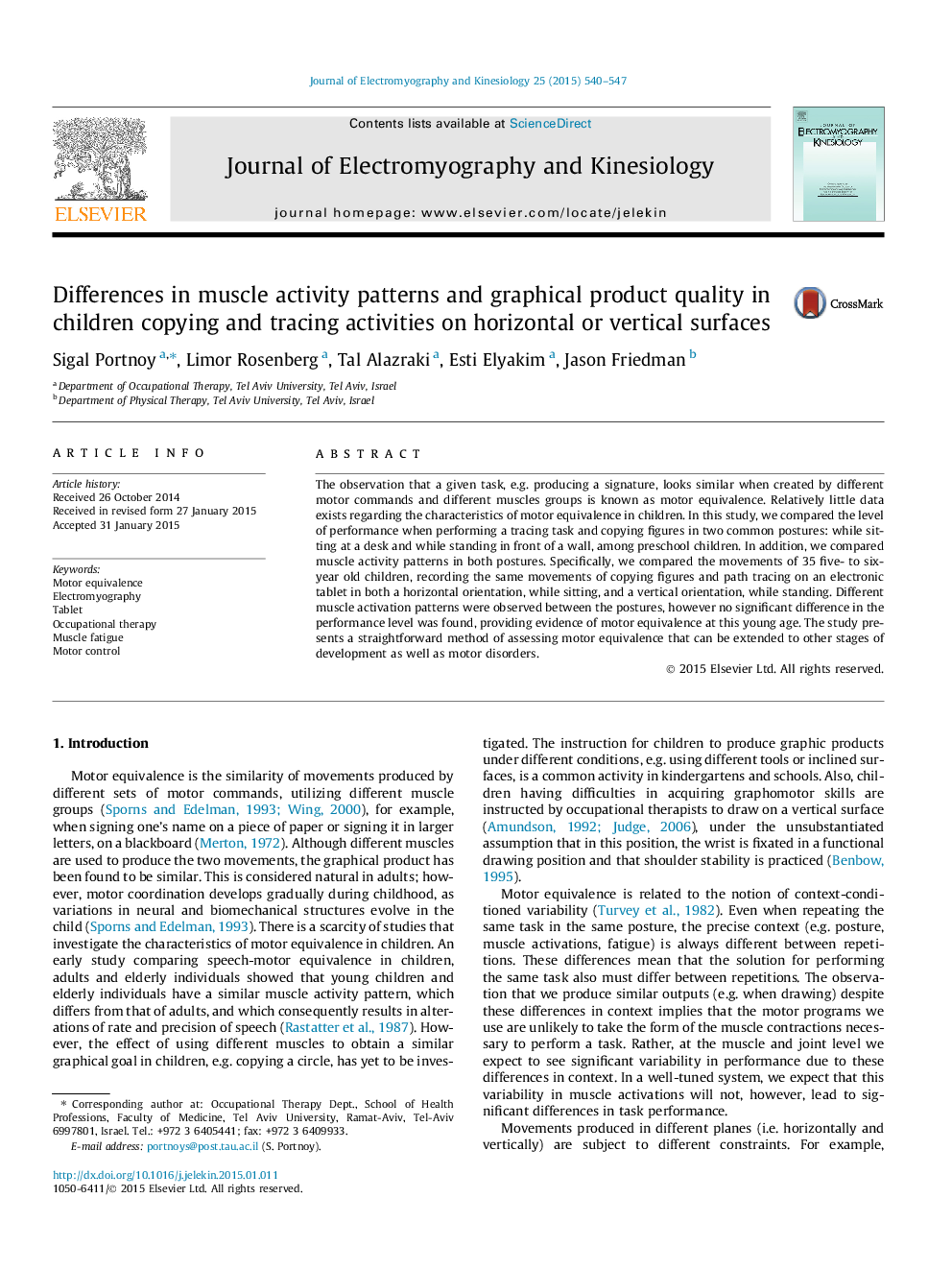| Article ID | Journal | Published Year | Pages | File Type |
|---|---|---|---|---|
| 6210311 | Journal of Electromyography and Kinesiology | 2015 | 8 Pages |
The observation that a given task, e.g. producing a signature, looks similar when created by different motor commands and different muscles groups is known as motor equivalence. Relatively little data exists regarding the characteristics of motor equivalence in children. In this study, we compared the level of performance when performing a tracing task and copying figures in two common postures: while sitting at a desk and while standing in front of a wall, among preschool children. In addition, we compared muscle activity patterns in both postures. Specifically, we compared the movements of 35 five- to six-year old children, recording the same movements of copying figures and path tracing on an electronic tablet in both a horizontal orientation, while sitting, and a vertical orientation, while standing. Different muscle activation patterns were observed between the postures, however no significant difference in the performance level was found, providing evidence of motor equivalence at this young age. The study presents a straightforward method of assessing motor equivalence that can be extended to other stages of development as well as motor disorders.
